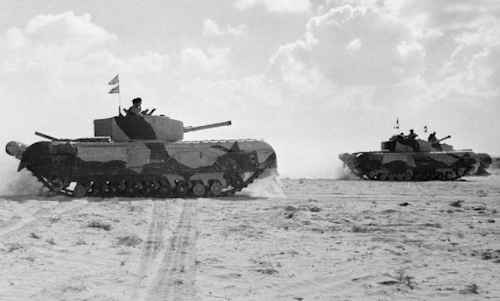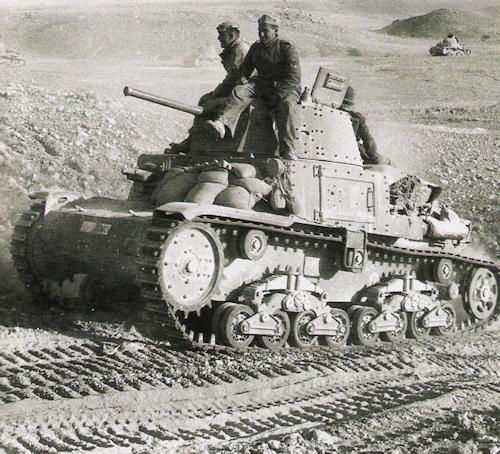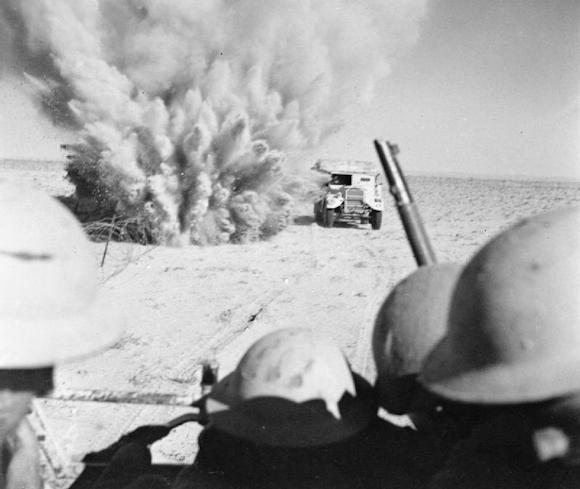Between the 23 and the 24 October 1942, in El Alamein, 100 km west of the Nile, the largest battle in Africa of the Second World War is fought.
The first half of the 42 (the fateful year of the entire world war) had seen the Afrika Korps advance in the desert in a lightning-fast way. Malta, a British base at the center of the Mediterranean, had been silenced, at least temporarily, Tobruk had been regained, leaving Rommel's troops with all kinds of materials, means, fuel and 30.000 prisoners of His Majesty.
Cairo seemed one step away, despite the widespread pessimism in the Italian-German commandos, Rommel, in just over three months had brought his meager divisions a few miles from the Nile, without being able to occupy Alexandria in Egypt.
The race had drained the reserves and dangerously lengthened the supply lines - forcing the logistic departments to cover hundreds of km on the only viable coastal road, under constant attack by the RAF - arresting the advance of the Afrika Korps, then forced to a terrible battle of attrition, made up of artillery and clashes with masses of tanks.
Just the mass made the difference, in fact the British victory was written in the numbers: 250.000 soldiers against 120.000, 1.500 tanks against 500 (most antiquated models), the artillery spoke of a report in favor of the British of 3 at 1.

The RAF could also deploy 1.500 combat aircraft against just 350 by the Italo-Germans.
Large quantities of fuel available to the British, while for the Afrika Korps the reserves were scarce.
The great battle, begun at 21.40 (Italian time) of 23 October, begins with the absence of Rommel, convalescent in Austria, and sees the death of his replacement, Stumme, who died of a heart attack during an inspection at the first lines.
When Rommel returns and begins to issue the first provisions to try to stem the British attack, the fate of the Afrika Korps is already marked.
The operation of Montgomery (commander of the British VIII Army) initially focuses on the south side of the front (Operation Lightfoot), where however the strong resistance of the FOLGORE and PAVIA Divisions meets; for many days there are close encounters between tanks, the infantry are fighting to the death, with counterattacks and maneuvering around, thousands of men fall.
The clash moves north (Operation Supercharge) which will sanction the final act of the battle. At 01.05 at 2 November Montgomery, thanks to its numerical and material superiority, starts the final push.

The German Command understands that the best solution is to save the still operating units, which try to disengage from the enemy outlet, starting the 3 November to fall back fighting. Orders from Berlin (confirmed by Rome) condemn the forces of the Afrika Korps to destruction on the spot.
The Italian soldiers fight with great courage. The divisions LITTORIO and ARIETE, to allow the detachment of the Germanic units, contended the pace of the enemy until they were annihilated. The Bersaglieri sacrifice themselves to the last man.
The BOLOGNA and TRENTO divisions are overwhelmed by the November 4; in the afternoon of 5 the BRESCIA division had to give up its arms, the next day it was the turn of BRESCIA and FOLGORE (300 survivors from 5.000 left from Tarquinia).
The commander of the XXXI Alpine sappers battalion, Major Paolo Caccia Dominioni, said that our soldiers clung, each to their own piece of desert, as if it were a promised land.
The British, despite their overwhelming superiority in men and equipment, were forced to earn a victory at a high price, meter by meter.
Our soldiers overcame their condition of inferiority with heart, courage and a love for the Fatherland, which only a few can understand today.
Photo: web / Imperial War Museum












